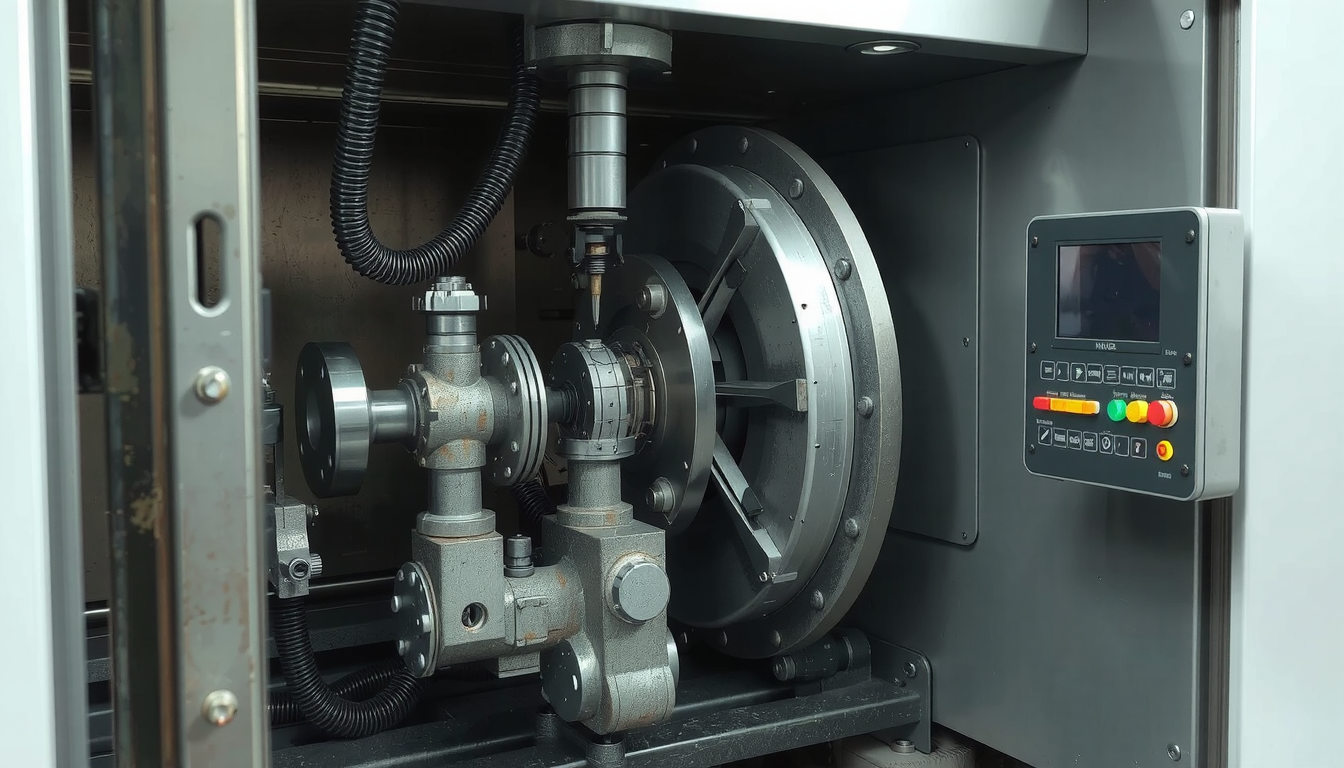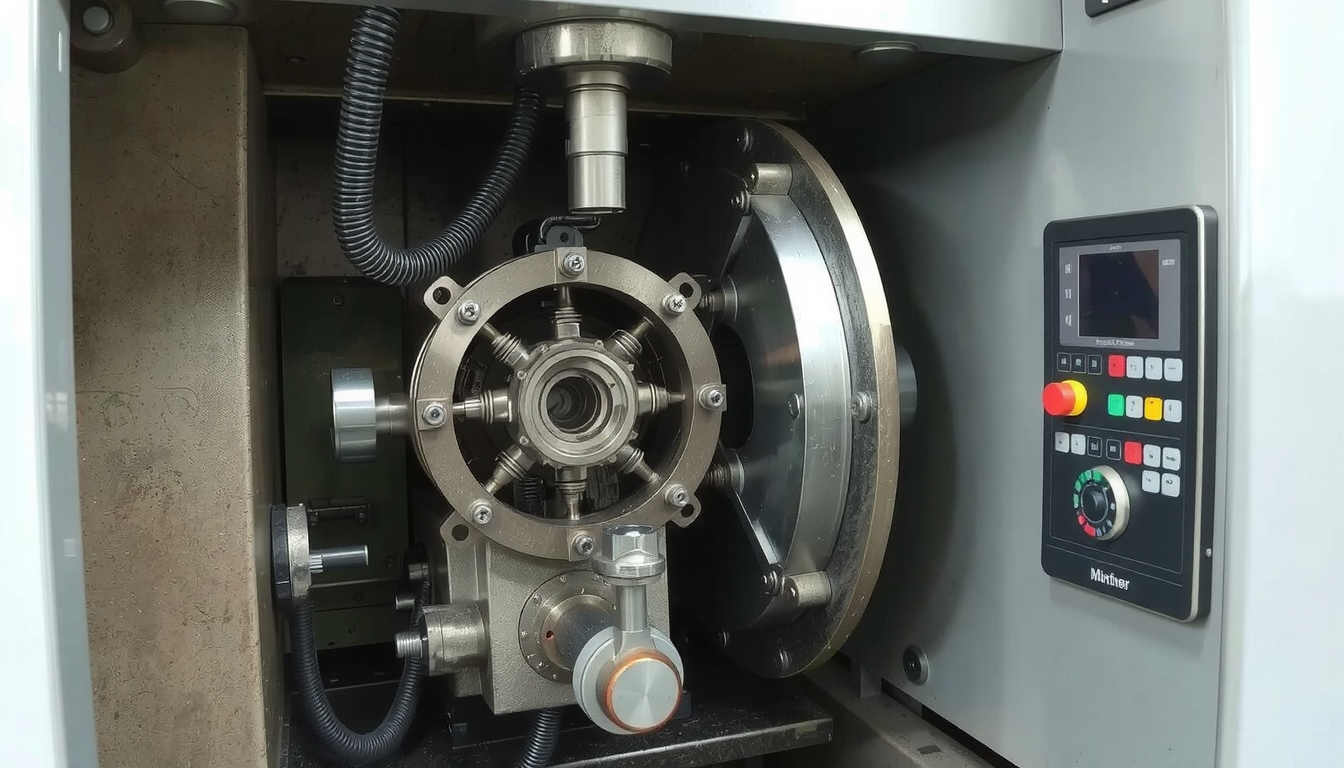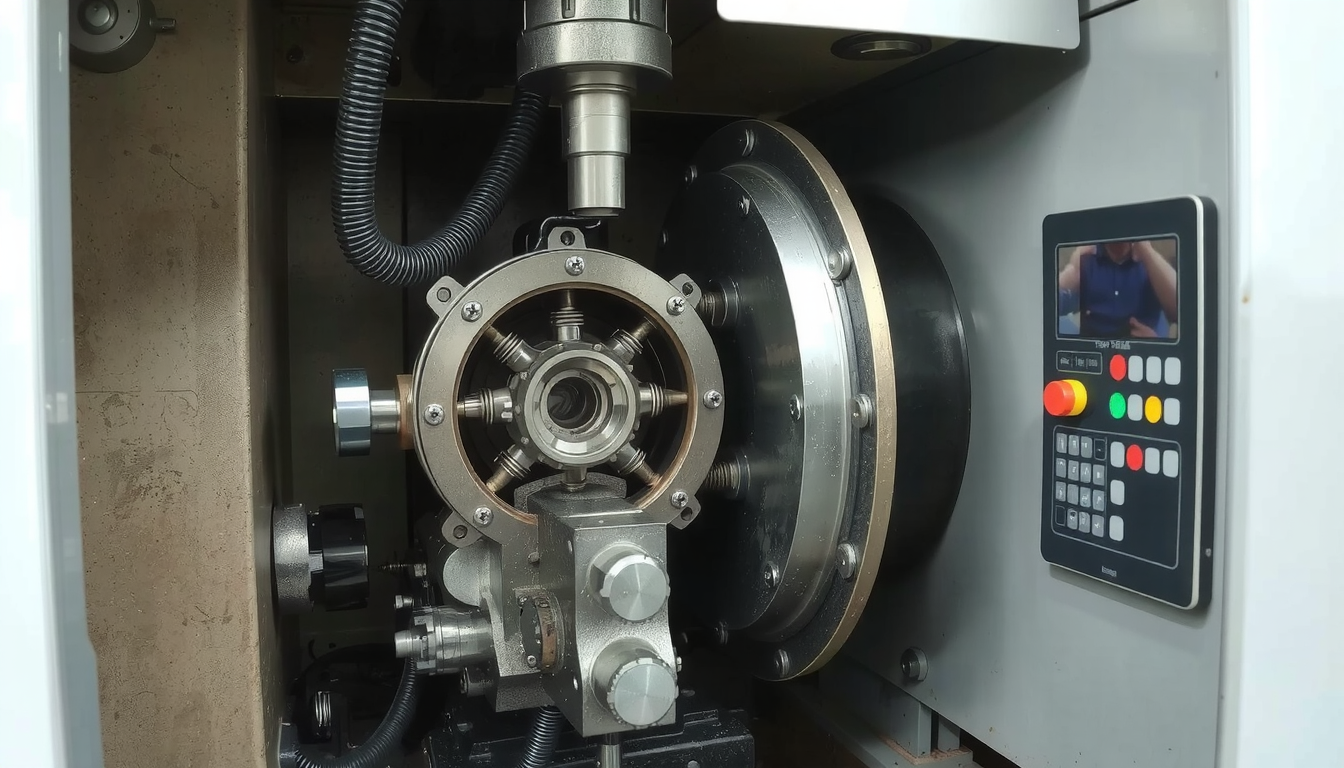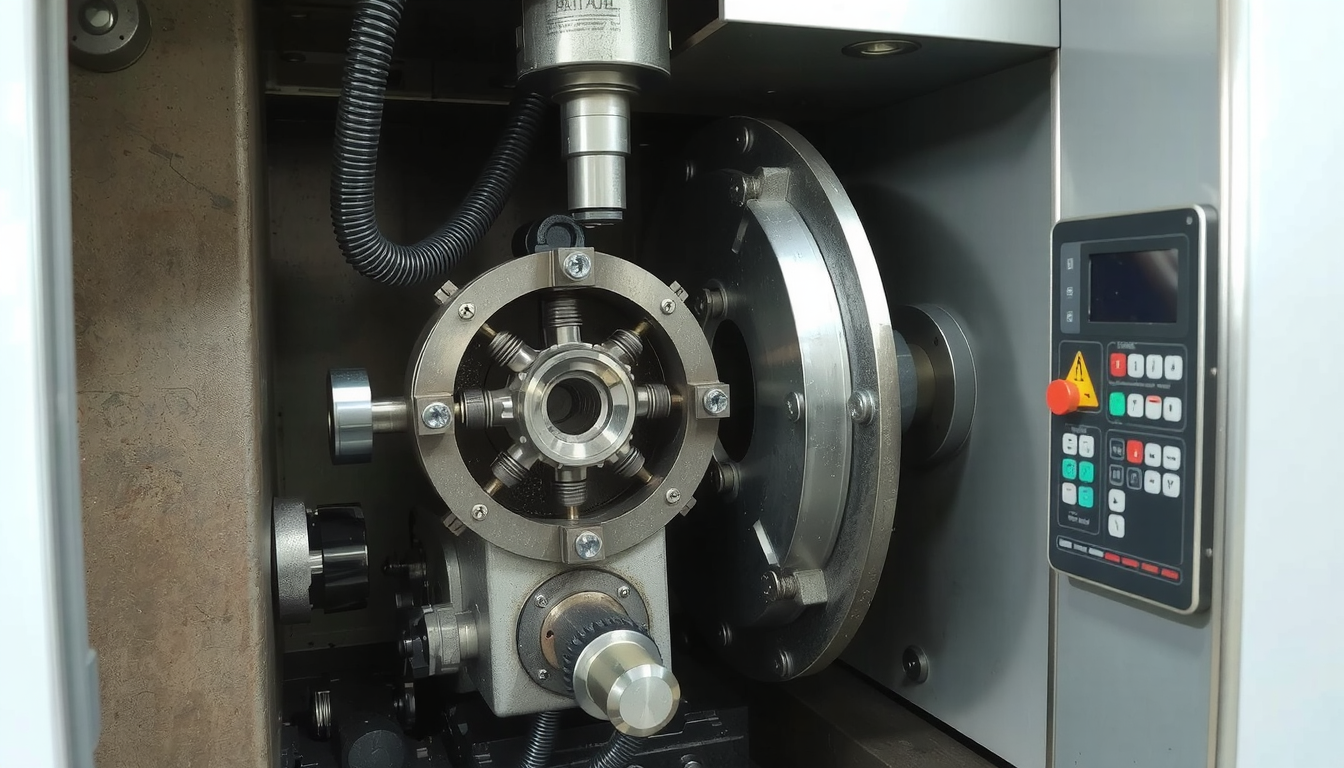A CNC Lathe rotates a workpiece at very high speed. At the same time, a computer-controlled tool introduces the removal of material in order to form the workpiece according to the pre-programmed design.

The manual lathe requires a machine operator to turn knobs and levers, while the CNC lathe uses the computer to control the motion. The term “Computer Numerical Control” (CNC) represents the process of precision fabrication of components autonomously.
This paper narrates the working of a CNC lathe machine. We will read through the main components first. We will deal with the step of converting a digital file into a complete part developed. We will also see the various cuts that they can do which enable their wide application in manufacturing.
The Main Idea
CNC turning can be classified as a “subtractive manufacturing” process if we focus on its characteristics. What this means is that we are starting with a solid material block or bar. Next, we will shape it by removing the unwanted sections. As a result, we will have the desired shape.
Imagine a potter with a wheel. Instead of utilizing clay to build, however, a lathe subtracts it. The core physics of the machine tool function is easy but very powerful.
In a lathe machine, the workpiece spins. The cutting tool glides along it. This is quite the opposite of a CNC mill where it is the tool that spins. A lathe tool has two main directions or axes. The Z-axis is aligned with the length of the component. The X-axis moves in and out to set the diameter.
The Structure of a CNC Lathe
To comprehend how a CNC lathe machine operates, there is a need to know its main parts. Every part carries a particular duty. They all form a pack.
The Most Important Part: CNC Controller. This is a PC with a terminal and monitor. The operator enters the program here. The program is in G-code form. The controller interprets the code. It triggers motors to change positions at the appropriate intervals.
The Motor of the Machine: Headstock and Spindle. The headstock is the box that houses the primary motor. The spindle is the moving component. The one that actually spins. The spindle is the component that rotates the workpiece.

The Mover: Chuck or Collet. This is a fixture which is spindle-mounted. It connects to the workpiece with a quick chucking mechanism. The workpiece is held during the high-speed rotation securely, and it is not going to move in another direction.
The Support: Tailstock. This is located at the opposite end from the headstock. Also, it can slide across the machine’s bed. It is for support of long, thin pieces of work that can bend or vibrate during the cutting process.
The Tool Changing Mechanism & Tooling. The turret is a disk that has a collection of the multiple cutting tools. It can turn to present the tool required for each operation at the right time, making it possible for the machine to do turning, drilling, and threading in one set-up. This part interconnects with the understanding of a CNC lathe core components with the rest of its functioning.
The Frame of the Machine: Bed and Carriage. The bed is the massive, robust support of the entire machine. The carriage slides along the bed, in Z-axis. It is indeed the carriage that carries the cross-slide. The cross-slide moves in the X-axis which is at a perpendicular (right) angle. Both can transfer the tool turret very precisely.
| Компонент | Основная функция | Why It’s Critical |
|---|---|---|
| Контроллер ЧПУ | Reads G-code, controls motors | The brain; without it, it’s just a manual machine. |
| Headstock/Spindle | Rotates the workpiece | Provides the cutting motion (speed). |
| Чак | Grips the workpiece | Ensures the part is held rigidly and spins true. |
| Turret | Holds and changes cutting tools | Enables automated, multi-step operations. |
| Carriage/Bed | Guides tool movement | Provides the precise linear motion (feed). |
The Complete Process
Knowing parts is just one thing. Seeing the organization where they work cooperatively to convert a design into an actual product is the real power of the machine. The entire workflow is here.
Step 1: The Blueprint (CAD)
The process starts again not with the machine but the computer. The designer is tasked with creating a 2D drawing or 3D model of the final part. For this, they can utilize SolidWorks, AutoCAD, or Fusion 360 software. This process is called Computer-Aided Design (CAD).
Step 2: The Machining Strategy (CAM)
The next step is to get the CAD file into CAM software. CAM stands for Computer-Aided Manufacturing. Here, a programmer or machinist has to decide what parts will be cut first. Next, they will determine which tools to use and how the tools will move. The operator will set the speed of the parts (RPM) and the speed of the cutting tools (feed rate). The CAM software will generate a text file with the necessary commands which is also referred to as G-code.

Step 3: Machine Preparation & Setup
The next stage is the actual work. In the beginning, we have to fix a raw material into the chuck. This will be a round bar of aluminum. Remember to check that it is tight and perfectly centered. Then, we have to load in the necessary cutting tools into the turret. One of the parts that are critical is “touching off” the tools. This step is done by carefully moving the tool tip to a known position. It is for the machine’s computer to be aware of the length and location of the tools. The manual step adds up to the accuracy of the work.
Step 4: Loading the Program & Dry Run
The G-code file is sent to the CNC controller. This is usually done with a USB key. Before cutting the metal, the machinist clears a wise run. This means running the program when the tools are set far from the part. What comes out can be seen on the machine’s movements. Check the tool paths that are being processed; you can run their movements to ensure that they won’t make a crash. Modern machines also have a graphic simulation for this step.
Step 5: The Machining Process Begins
The operator starts with all the settings reviewed, and subsequently closes the machine doors. They then push the button “Cycle Start”. The safety doors are locked, and cooling fluid feeds the cutting area. The spindle is rotated to the programmed speed of the workpiece. The turret places the first tool into the proper position. The actual working point begins.
Step 6: The Dance of the Axes
The CNC controller reads each letter of G-code code. Such a command as tells the machine to move the tool in a straight line (G01). The tool follows the Z-axis to a point of -50.0 mm. It’s a feed rate (F) of 0.2 mm per revolution. The controller causes the motors to work to move the carriage and cross-slide. This action sends the tool to the correct spot on the workpiece to make the cut.
Manufacturers who need quality parts without having the machinery do the job can get excellent results from professional Услуги токарного станка с ЧПУ that exist these days.
Step 7: Part Completion and Quality Control

After all lines of code have been completed, and thus the program ends, the spinning stops. Then the operator opens up the doors and removes the finished part from inside. The part is cleaned and then inspected. Tools like digital calipers and micrometers are used to measure all sizes- the machinist steps in to ensure they meet the original design.
Visualizing the Cut
CNC lathes can carry out several kinds of cutting operations. The processing of these basic tasks results in getting more complex shapes. Lathe operation is grounded in the principle of a spinning workpiece and a moving cutting tool and it is quite fundamental.
- Поворот: The tool is moving on the side of the workpiece at the same time. This leads to a diameter reduction. (Example: making a round rod thinner).
- Facing: The tool is moving the workpiece’s end across. This will cause the surface to be flat. (Example: cleaning the end of a saw-cut bar).
- Grooving/Parting: A small tool is thrust straight into the bar by plunging. This forms a groove or separates the part off from the stock bar.
- Threading: A unique tool moves the bar at a predetermined speed. This operation makes a spiral thread visible.
- Drilling/Boring: A drill bit is used to bore a hole in the center of a spinning part. A boring bar can be used to make the hole larger and more exact.
The Impact of CNC Lathes
Becoming acquainted with the working of a CNC lathe machine helps to understand how they are the base of modern manufacturing. They have enormous advantages.
Exactness and Repeatability: Controls by the computer are very precise. They enable the production of thousands of identical parts. Allowable deviations can be a few microns which are the fraction of the width of a human hair.
Easily Formed Shapes: CNC lathes generate elaborate shapes at their will without having the need to stress the workers. Such shapes would be very hard and sometimes impossible to do so on a manual machine.
Great Saving of Time: Once the program gets the green light, the machine can accomplish tasks without much checking. This service benefits both production speed and reduction of costs. There are lots of merits CNC lathe machines have leading them to be indispensable in industries today.
Secure Environment: The CNC lathes of today are designed with working areas completely enclosed. Accordingly, the operator is protected from shrapnel as well as from cutting fluid being sprayed.
The unique combination of precision and efficiency is why CNC technology sticks to the core of manufacturing today. This area is a field Mekalite is deeply involved in.
FAQ: Your CNC Lathe Questions Answered
The responses to some frequently asked queries about how CNC lathe machines work are given here.
1. What distinguishes a CNC lathe from a CNC mill?
In a CNC lathe the workpiece is rotating while the cutting tool is moving across it; therefore, it’s best for cylindrical and round parts. Whereas, in a CNC mill, the workpiece is on the table which does not move. Instead the cutting tool spins and moves, and it is used to achieve more complex flat shapes with pockets and holes.
2. What does G-code mean?
G-code is the language of programming that tells a CNC machine what to do. Each line is one command that it follows, like “move to this X/Z spot.” It is the main tool of controlling movements of the spindle tool, tool feed rate, and other functions such as switching the coolant on or off.
3. Are CNC lathes only capable of working with metal?
No. While they are most famous for machining metals like aluminum, steel, brass, and titanium, CNC lathes are also very good at cutting plastics. Some plastics like Delrin, PEEK, and nylon are common. They can even machine wood, with the right tools and settings.
4. What do the X-axis and Z-axis represent on a lathe?
The Z-axis generally runs parallel with the spindle and regulates the tool’s movement lengthwise to a part. The X-axis is at a right angle to the spindle and it governs the tool’s in and out movement, thus setting the diameter of the part.
5. Is there any difficulty operating a CNC lathe?
It is not too hard to learn the steps of running a ready-made program. However, it takes long time and practice to become a competent CNC technician. It demands a thorough grasp of materials, tools, CAD/CAM programming, and problem-solving. It is a skilled trade that combines digital knowledge with tactile mechanical skill.

